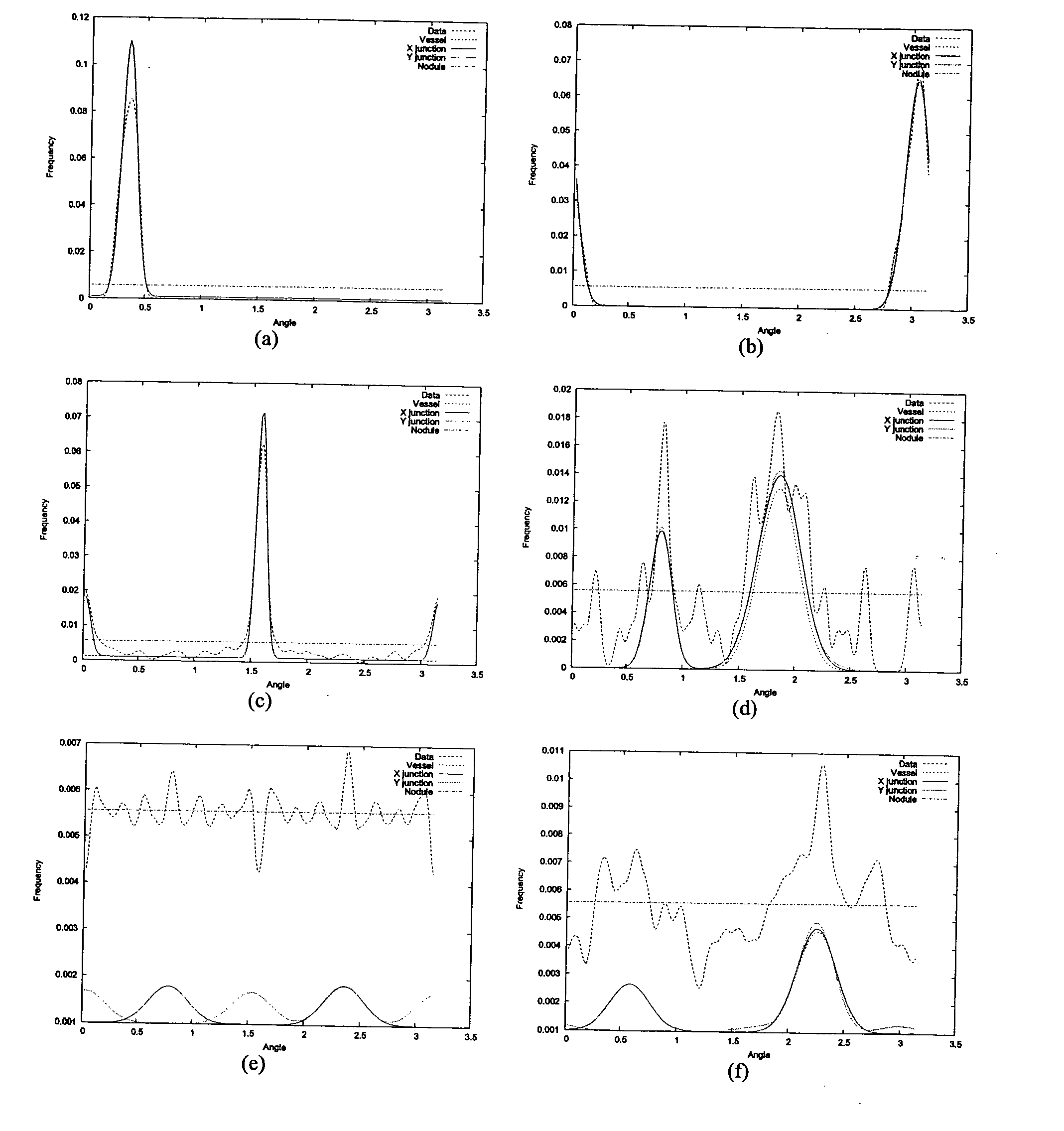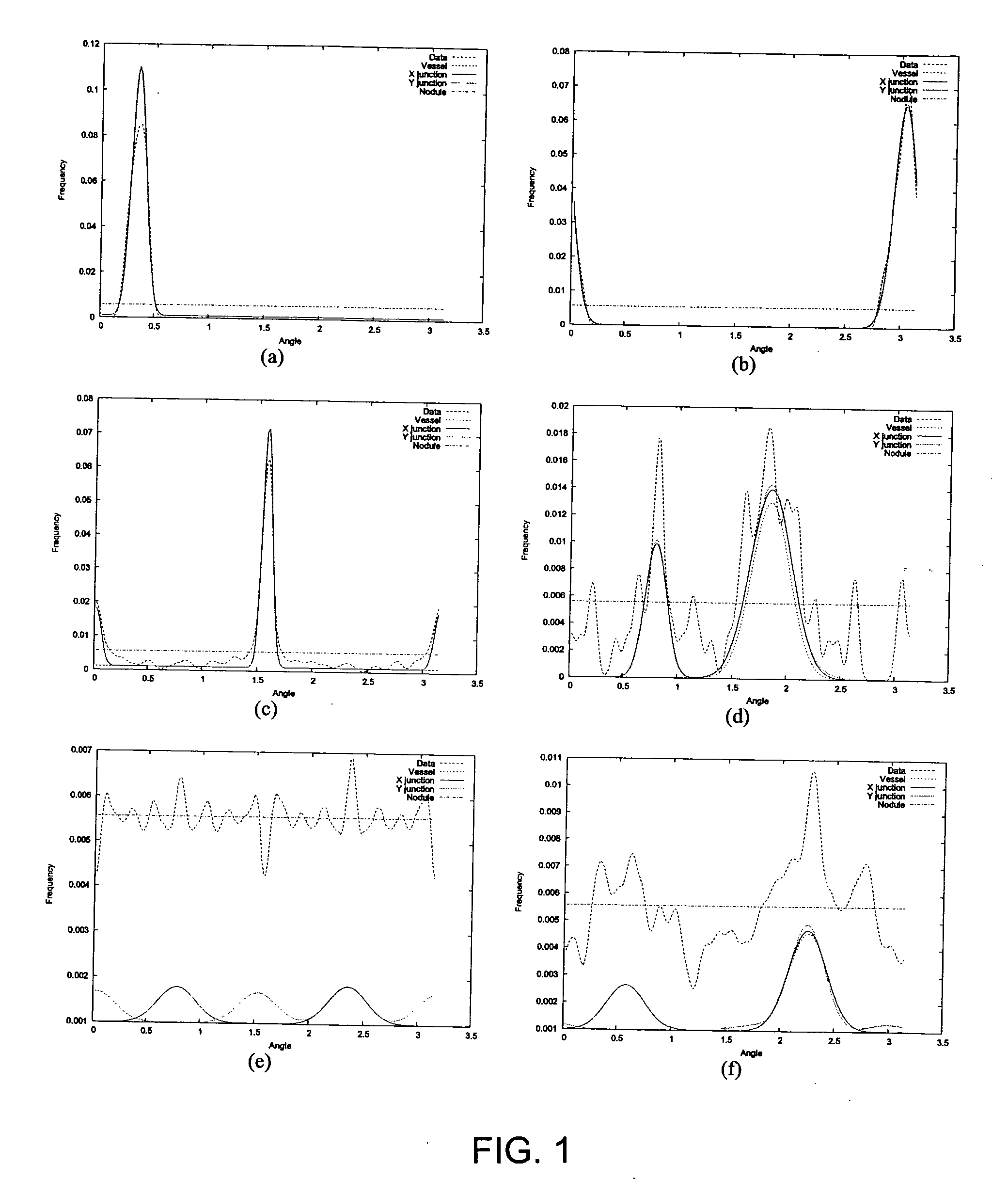Method for enhancing diagnostic images using vessel reconstruction
a diagnostic image and vessel technology, applied in the field of improving the diagnostic image, can solve the problems of large increase in the amount of medical imaging data that must be analyzed, manual analysis is often labor intensive and time-consuming, and manual analysis by a radiologist is generally time-consuming. achieve the effect of reducing or eliminating false positives
- Summary
- Abstract
- Description
- Claims
- Application Information
AI Technical Summary
Benefits of technology
Problems solved by technology
Method used
Image
Examples
Embodiment Construction
[0029] The present invention provides a method for improving a diagnostic image obtained by available imaging techniques, such as x-ray, magnetic resonance imaging (MRI), and computed tomography (CT). While the method of the invention is useful in improving various diagnostic images of any portion of the body, the invention will be described below with reference to a thoracic diagnostic image for imaging of the lungs by CT scanning.
[0030] In one embodiment of this invention, a diagnostic image is obtained by an available imaging technique, such as CT scanning. The diagnostic image generally is used to image a targeted object or portion of the body, and thus non-relevant regions, i.e., the portions of the obtained image that are not related to the desired or targeted object(s), body portion(s), or organ(s) are desirable removed. The non-relevant regions, e.g., non-lung regions of a thoracic image, can be removed by various and alternative means available to those skilled in the art....
PUM
 Login to View More
Login to View More Abstract
Description
Claims
Application Information
 Login to View More
Login to View More - R&D
- Intellectual Property
- Life Sciences
- Materials
- Tech Scout
- Unparalleled Data Quality
- Higher Quality Content
- 60% Fewer Hallucinations
Browse by: Latest US Patents, China's latest patents, Technical Efficacy Thesaurus, Application Domain, Technology Topic, Popular Technical Reports.
© 2025 PatSnap. All rights reserved.Legal|Privacy policy|Modern Slavery Act Transparency Statement|Sitemap|About US| Contact US: help@patsnap.com



